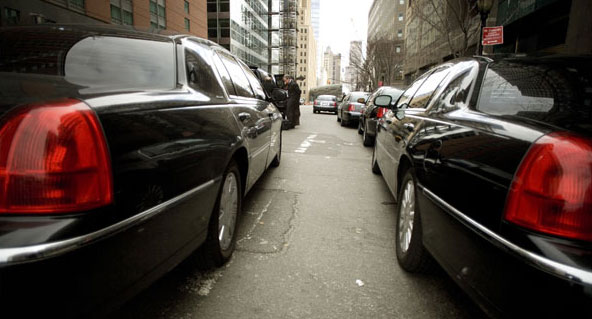 Annie Tritt for The New York Times.
Annie Tritt for The New York Times.
On New Year’s Eve, Dan Whaley, a tech entrepreneur in San Francisco, got into a black Town Car and was driven one mile to a holiday party. The ride cost him $27. At the end of the night out, Mr. Whaley took a Town Car home from the party. This time, the exact same ride cost $135.
Mr. Whaley was using Uber, a service that allows people to order livery cabs through a smartphone application. On New Year’s Eve, Uber, a start-up in the city, adopted a feature it called “surge pricing,” which increases the price of rides as more people request them.
Although New Year’s Eve was very profitable for Uber, customers were not happy. Many felt the pricing was exorbitant and they took to Twitter and the Web to complain. Some people said that at certain times in the evening, rides had spiked to as high as seven times the usual price, and they called it highway robbery. Uber’s goal is to make the experience as simple as possible, so customers are not shown their fare until the end of the ride, when it is automatically charged to their credit card.
Economists call this “dynamic pricing.” It is deployed by only a small number of businesses, like hotels, airlines and car rental companies, which raise prices on weekends and holidays when demand surges.
So why do people accept this pricing from airlines and hotels but became irate with Uber?
“With regular day-to-day decisions, consumers like predictability and don’t like to see prices change,” said Dirk Bergemann, a professor of economics at Yale. “People are trained that there is a level of predictability with purchases. There will be a regular price for a bottle of ketchup and a relatively average price for a taxi.”
Professor Bergemann said that as technology continually made it easier for companies to change prices in real time, businesses would try to do so. He said, however, that companies would have to be prepared for repercussions.
In 1999, Coca-Cola’s chief executive, M. Douglas Ivester, mused about vending machines that would raise prices for drinks as the temperature rose. The outcry from customers was a public relations nightmare, and the company denied it was testing such a product.
Amazon suffered a similar uproar in 2000 when it reportedly experimented with DVD prices.
But there is another way to think about it. “Sure it’s about the regularity, but someone who is driving a car on a regular occurrence deals with dynamic pricing all the time: it’s called gas prices,” said Travis Kalanick, co-founder of Uber. “Because this is so new, it’s going to take some time for folks to accept it. There’s 70 years of conditioning around the fixed price of taxis.”
 Julie Glassberg for The New York TimeTravis Kalanick, chief executive of Uber.
Julie Glassberg for The New York TimeTravis Kalanick, chief executive of Uber.
Some consumers might argue that price increases are fine, but there is a ceiling, and when that is breached, it begins to look as if a company is taking advantage of its customer. Charging someone $135 to travel a mile on New Year’s Eve could easily get lumped in that category — unless you are completely rational.
“If you’re a pure economist and following the laws of supply and demand, the argument is that if someone is willing to pay a price, then it is not excessive,” said Liran Einav, an associate economics professor at Stanford. “But that all depends on the type of long-term relationship you want to build with your customers.”
You might think that a technology company shaking up the taxi industry would want to maintain relationships with its customers. But that’s certainly not the lesson Uber learned.
“I don’t think that the constantly changing car price is necessarily where we want to go,” Mr. Kalanick said. “But on Halloween and New Year’s, it’s here to stay.”
Article source: http://feeds.nytimes.com/click.phdo?i=191c686b583b4b92007687ed4bab086e
Speak Your Mind
You must be logged in to post a comment.